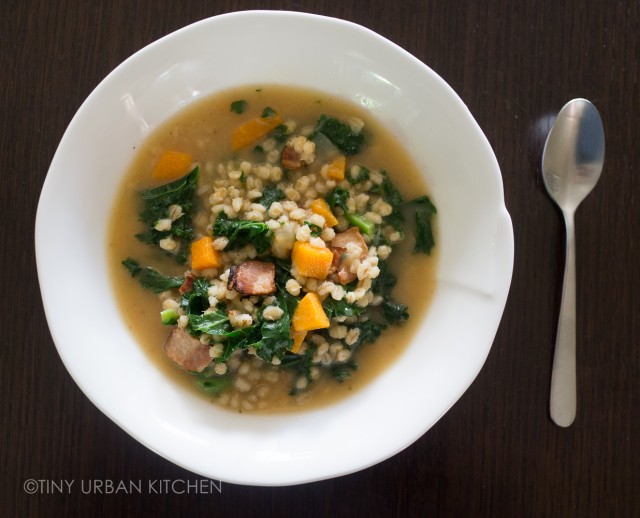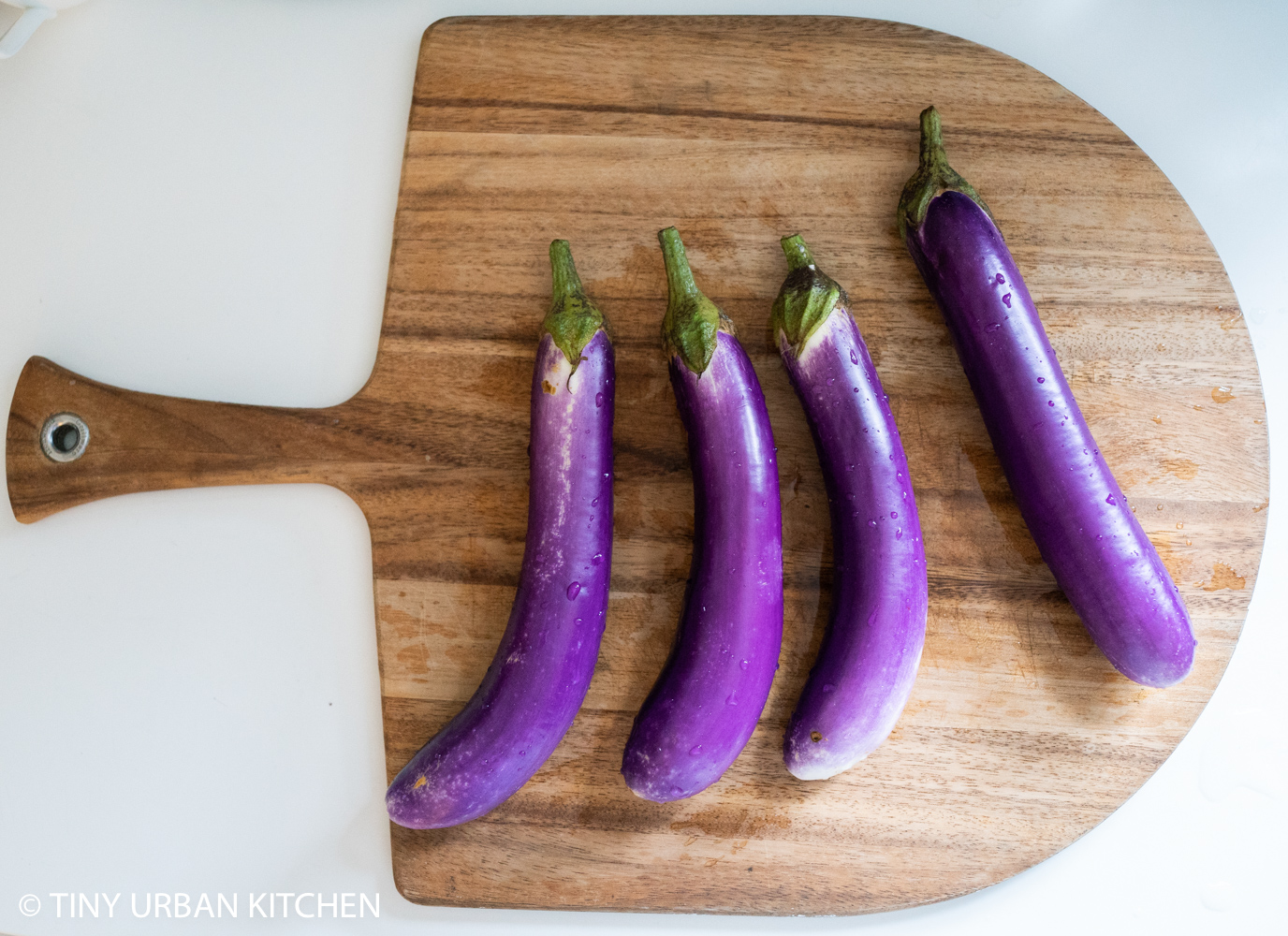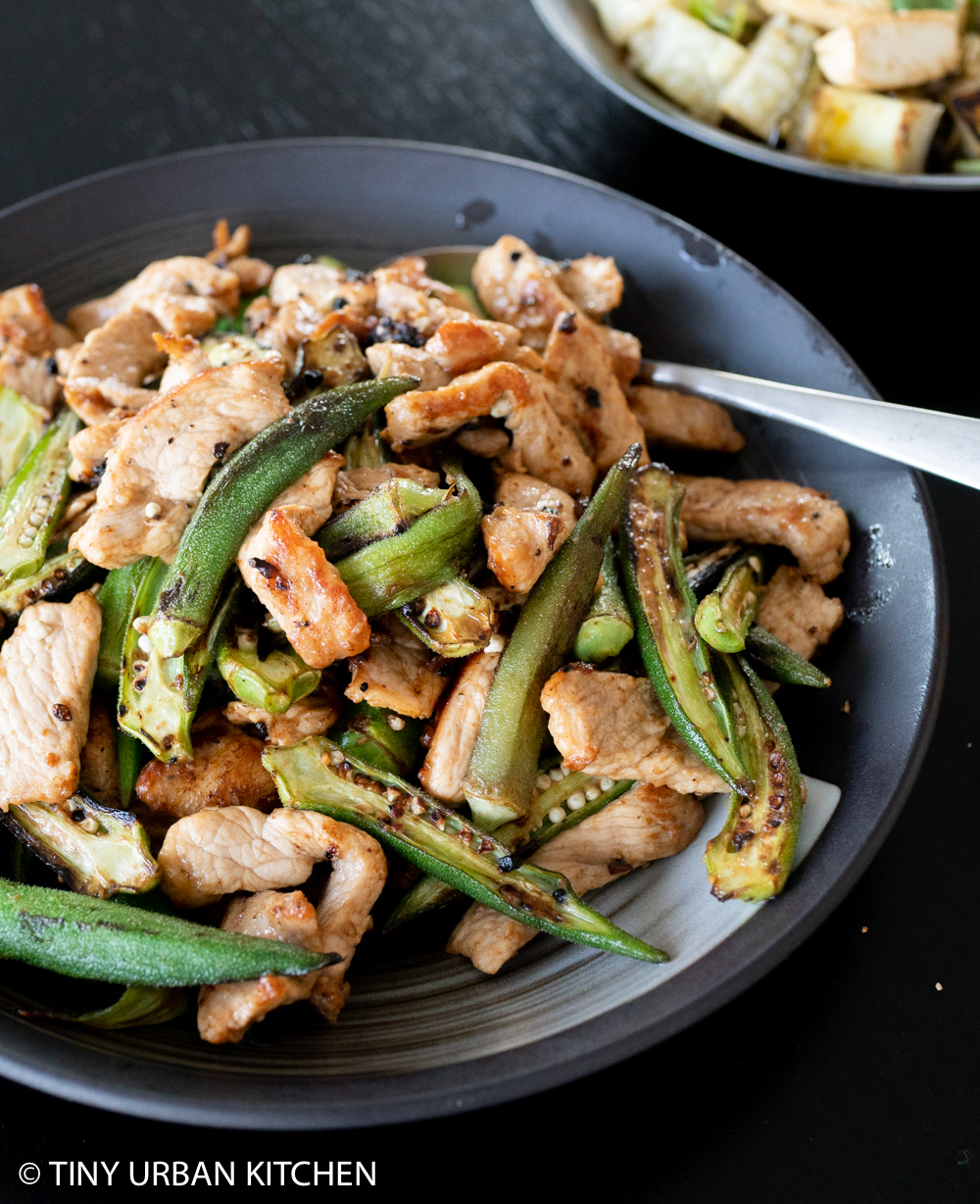I would have really thought that the days of soup would be over by now. Spring is technically here already, and yet we are still suffering through sub--freezing temperatures (with windchills down to the single digits).
Help.
Cold weather makes me want to stay indoors, read a good book, and drink hearty soup. A healthy soup that's chock full of vegetables and grains is the best. It warms me up inside yet also makes me feel good afterwards.
Recently I posted a photo of a kale bacon soup with barley that I had thrown together with stuff I had in the refrigerator. I had been meaning to make a barley soup with my pressure cooker for quite some time. Another snowstorm came, and I found the perfect opportunity to make this soup at home.
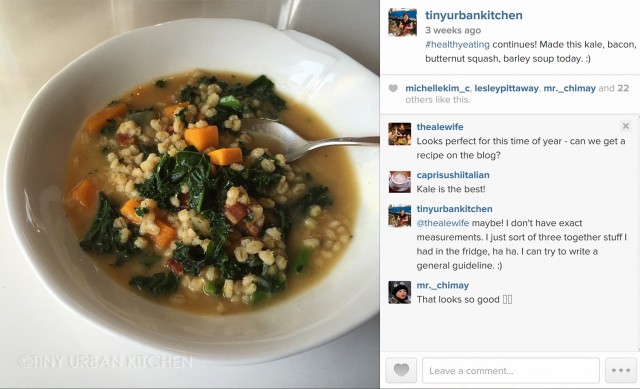
I hadn't planned on writing a post about it. However, after I received requests in response to my photo, I decided I would share my process in making this soup.
Please note, I'm not naturally a recipes person.
I find it easier to learn a few useful techniques, and then "add a bit here, add a bit there" to adjust final flavors of dishes that I make. It's the way my mom has always cooked. Heh, it's the way she describes recipes to me too (I think it's an Asian mom, thing!). This method suits my creative and spontaneous personality, though it make recipe writing and consistent recreation of dishes much more difficult.
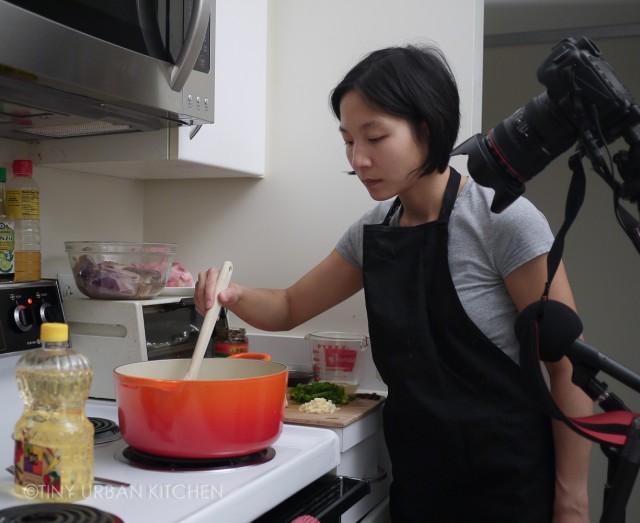
Over time, as I have improved as a cook, I rely more on my own cooking instincts to execute better and better dishes. However, I'm still not super rigorous about taking precise notes while I'm cooking.
Despite the paucity of photos for this post, I hope I can give you enough guidance that will enable you to make your own version of this healthy barley soup. 🙂
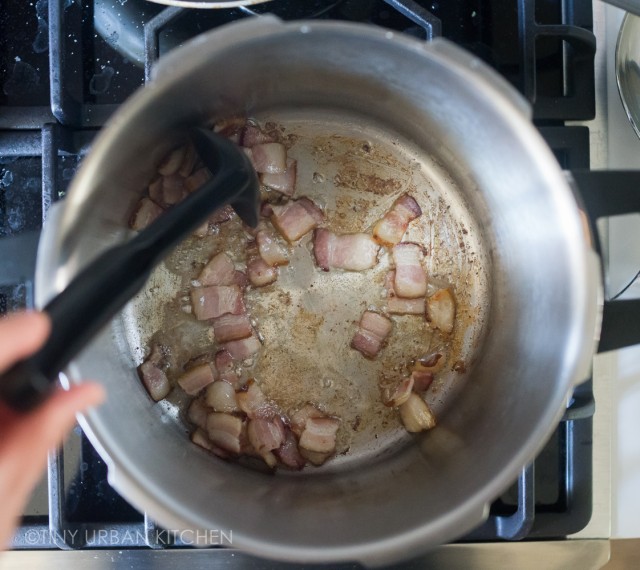
The first step is the umami base. Though I don't eat a ton of meat, I do like to add some smoky, salty goodness to my soups. I almost always have bacon in the refrigerator or freezer, so it's a natural starting point. You could also use sausage or some other smokey meat that gives off fat.
After rendering the fat, I like to saute aromatics, such as onions, leeks, shallots, or whatever you have in the fridge. You can even add mirepoix (celery and carrots) if you wish.
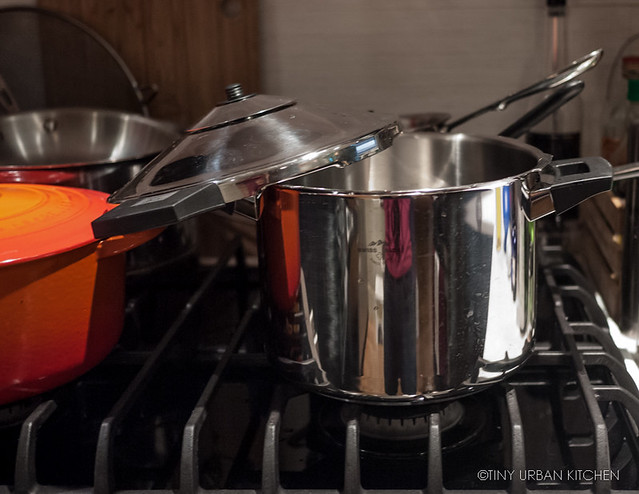
Finally, since I'm using a pressure cooker, I add the broth (chicken stock in this case, which I always have on hand), barley, and some herbs (bay leaf here). I pop the lid on and then cook under pressure (high) until the grain is done cooking (a little less than 20 minutes). I've done this with wheatberries too (they don't expand as much). You could even play around with other fun grains: farro, rice, spelt, kamut . . . the possibilities are endless!
After releasing the pressure and opening the pressure cooker back up, I add my quick cooking veggies, like leafy greens (I used kale) and butternut squash (which I happened to have in the fridge). I cook this for just a minute or two, until the vegetables are just wilted but not yet overcooked. If I had potatoes, I would have cut them up into small cubes to quick cook at this point.
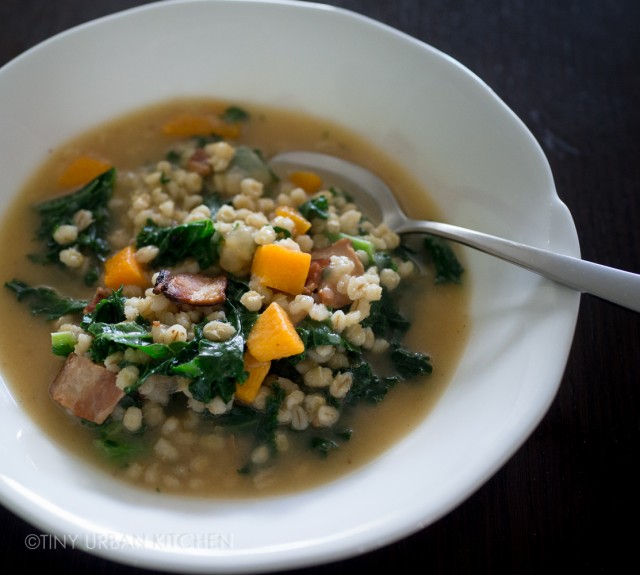
Add salt and pepper to taste, and serve!
Super easy, nourishing, and so satisfying on a cold day! Sadly, March is almost over and it's still below freezing outside.
I can't wait for real SPRING!
Hearty Kale Bacon Soup with Barley
3 slices of bacon, cut into 1-inch strips (alternatives: sausage)
½ onion, minced (alternatives: 2-3 shallots, 1-2 leek, or 3-4 spring onions)
4 cups chicken broth (1 paper carton) (alternatives: vegetable broth)
¾ cup pearled barley
1 large bunch of kale, chopped
1 bay leaf
½ cup cubed butternut squash (optional, though it adds nice color! carrots would have the same effect but I would add them at the beginning with the onion)
Cook bacon in a pot over medium heat until the fat is rendered, about 5-10 minutes. Cook onions and (optionally) carrots in the bacon fat until translucent. Add chicken broth, barley, and bay leaf. Cover the pressure cooker and bring up to pressure. Cook at medium pressure for about 20 minutes. Release the pressure according to the manufacturer's instructions. Add kale and cook until just wilted but still bright green. Season to taste with salt and pepper. Optionally add other spices according to preference.













